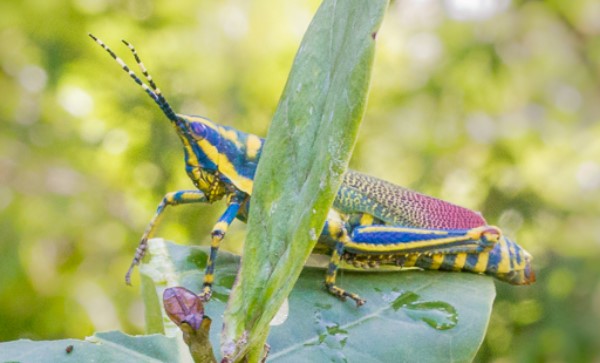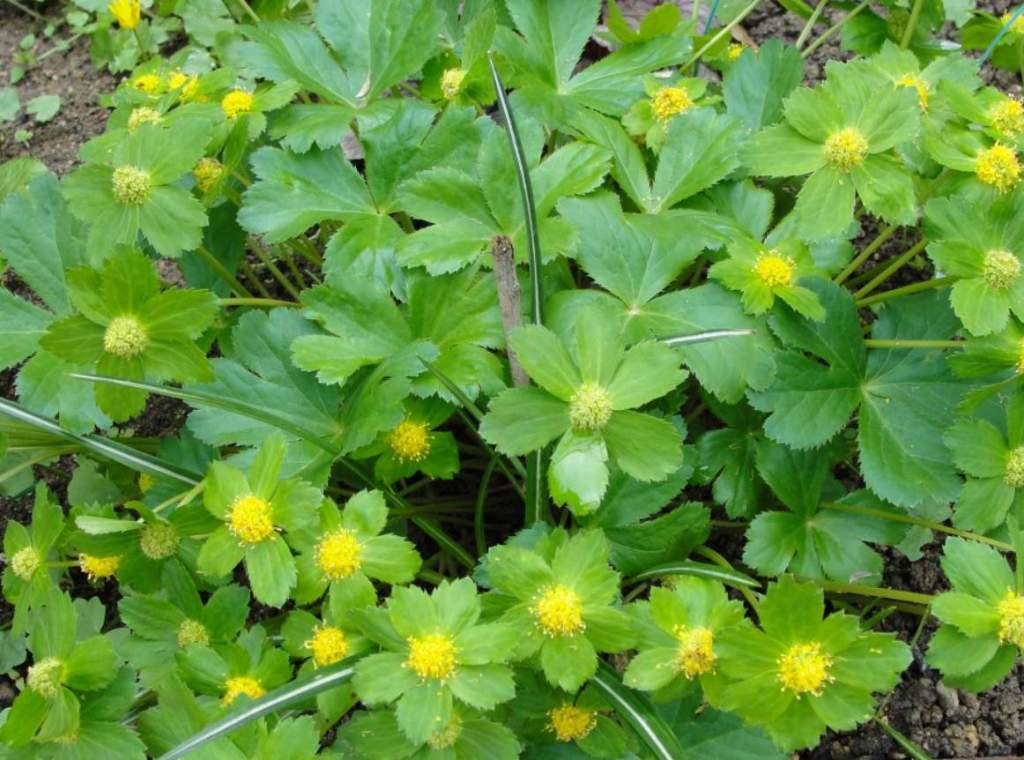Discover the fascinating facts about painted grasshoppers (Poekilocerus pictus), including their physical characteristics, behavior, role in the ecosystem, and more. Learn about this unique insect and its significance in the natural world. This species of grasshopper is found in South Asia, particularly India. Some interesting facts about the painted grasshopper include:

-
Colorful Appearance: The painted grasshopper is named for its vibrant, colorful appearance. The grasshopper has a brown body with red, yellow, and green markings, making it a striking insect to look at. The young stage of the grasshopper is characterized by a yellowish-green color with delicate black lines and small red spots. Upon reaching maturity, the grasshopper transforms into a bright yellow with turquoise stripes on its body, front wings that are green with yellow spots, and pale red hind wings. This change in appearance occurs through the process of molting.
-
Camouflage: The bright colors of the painted grasshopper serve as a form of camouflage, helping it blend in with the foliage of plants. The red, yellow, and green markings on its body help it blend in with the foliage of plants, making it less noticeable to predators. This form of camouflage allows the grasshopper to survive in its environment by reducing its visibility to potential predators. By being camouflaged, the painted grasshopper is able to feed and reproduce without facing a significant threat from predators.
-
Diet: The painted grasshopper is an herbivore and feeds on the leaves and stems of plants. Sometimes feeds on the poisonous plant Calotropis gigantea. The main food plant is known as Ak grasshopper or Titigodo in some tribal areas, based on the name of the plant.
-
Breeding: The painted grasshopper is known to lay its eggs in the soil, where the young will hatch and grow into adulthood. In adults, a viscous, bubbly sediment forms along the sides of the body due to the discharge occurring under the tegmina. The breeding process of the painted grasshopper begins with courtship. Males produce a calling song to attract females, who will then approach and inspect the male. If the female is receptive, she will allow the male to mate with her. After mating, the female will lay eggs in the soil. The eggs are covered in a protective coat and can take several weeks to hatch, depending on the environmental conditions. When the eggs hatch, the nymphs, or immature grasshoppers, will emerge and begin to feed on plants. As they grow, they will molt several times, shedding their exoskeleton to allow for further growth. Once the nymphs reach maturity, they will mate and lay eggs, starting the cycle again. The painted grasshopper has one generation per year, and its lifespan is typically several months.
-
Singing: The painted grasshopper is known for its ability to produce a loud, distinct sound by rubbing its hind legs against its wings. This singing is used to attract mates or to warn other grasshoppers of danger. The males created the song, which consists of a sequence of pulses or trills. The sound is usually produced in the evening and can be heard from a distance. One distinctive feature that sets the painted grasshopper apart from other grasshopper species is its distinct sound.
-
Habitats: The young, immature stage of the grasshopper is characterized by a greenish-yellow color with delicate black lines and tiny red spots. Upon reaching maturity, the grasshopper transforms into a bright yellow with turquoise stripes, with green front wings dotted with yellow and pale red hind wings. This transformation occurs through the process of molting. When the immature grasshopper is slightly pinched on its head or abdomen, it expels liquid through a sudden and forceful jet from a dorsal opening located between its first and second abdominal segments. This discharge can reach a distance of two inches or more and is aimed toward the pinched area. This process may be repeated multiple times. The liquid is pale, milky, and has a slightly thick consistency with a bitter taste, which is the result of the cardiac glycosides the insect obtains from its plant-based diet.
-
Poisonous: The painted grasshopper can contain cardiac glycosides in its body, which are toxic substances that affect the heart. However, the extent of their toxicity is not well documented, and they have not been considered a major health threat to humans. It is recommended to avoid handling or ingesting any type of grasshopper as a precaution.
-
Role in Ecosystem: The painted grasshopper plays a role in the ecosystem as a food source for predators and helps to regulate plant growth by consuming vegetation. As an herbivore, it feeds on the leaves and stems of plants, helping to regulate plant growth and preventing the overpopulation of certain species. This can have a positive impact on the overall balance of the ecosystem. The grasshopper is also a source of food for predators such as birds and reptiles, helping to support their populations. By serving as both a consumer and a prey species, the painted grasshopper contributes to the interconnected food chain within its ecosystem. Further, the grasshopper is an indicator of the health of their environment. A decline in the population of painted grasshoppers can indicate changes in the quality of the habitat, such as pesticide contamination or loss of vegetation. Therefore, the painted grasshopper plays a vital role in maintaining the balance and health of its ecosystem and should be protected and conserved.
-
Where to find? The painted grasshopper can be found in various regions of India, Sri Lanka, and other South Asian countries. It inhabits a variety of habitats, including grasslands, agricultural fields, and scrublands. During the breeding season, painted grasshoppers can be found in large numbers, often congregating on vegetation. At other times, they can be more solitary and difficult to spot. To find painted grasshoppers, it is best to look for areas with abundant vegetation, especially during the breeding season. You may also look for areas that have been recently disturbed, such as newly cultivated fields, which can attract grasshoppers. It is important to note that painted grasshoppers are not considered a threatened species and are relatively common in their native range. However, as with all wildlife, it is important to observe them from a distance and not disturb their habitat.
-
Threats: Habitat destruction and the use of pesticides are the main threats to the painted grasshopper population.
Therefore, the above facts about painted grasshoppers help you understand this fascinating insect with a unique and colorful appearance. From its distinctive markings to its role in the ecosystem, there is much to learn about this species. We hope that this blog post has given you a deeper understanding and appreciation for the painted grasshopper and the important role it plays in the natural world. As we continue to learn about this insect, it is important to protect and conserve its habitat to ensure that future generations can enjoy and learn from these fascinating creatures.
Read More: Is Redfish Good to Eat?







